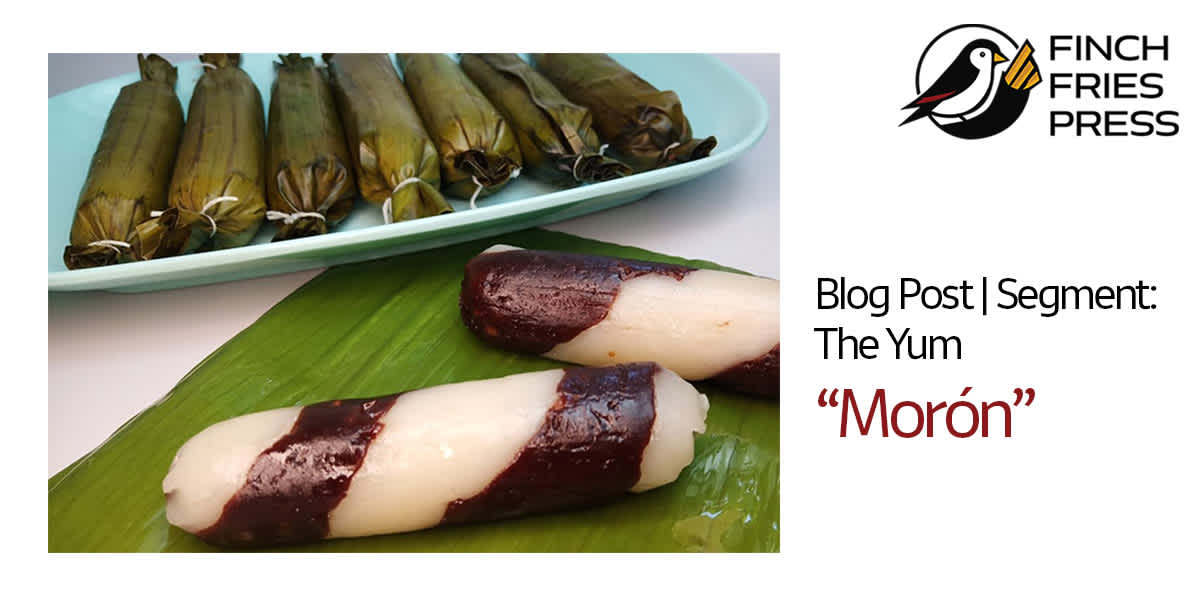Despite a perhaps unfortunate name from an English speaker’s point of view, morón cleverly combines (kinda sorta) rice cakes and chocolate. Morón is a popular treat in Region 8 of the Philippines (Samar and Leyte), where at least half of my roots originate.
My wife, Jane, helped me heavily with this post. Future posts in The Yum category will follow a similar format. That said, the “Recipe” and “Things Readers Should Know” sections may vary slightly depending on the food item in question. Enjoy!
Food: Morón
Source: Waray people of Region 8, Philippines
Basic Information: A dessert made of glutinous rice, chocolate, and coconut milk that can also include peanuts (or mani in Waray). It’s eaten during celebrations, but nowadays you can find morón vendors almost everywhere in Region 8 so it’s a perfect merienda food.
Recipe (for reference)
http://bucaio.blogspot.com/2009/09/moron-recipe.html
Notes from Jane: Readers can use this as a guide, but we don’t use hot water for milking the coconut. We also don’t use a candle for the leaves because that’s time-consuming—frankly, I’ve never heard of that! An open fire like grilling is okay but not candles! Also, no evaporated milk or vanilla extract. And no cheese. This is not puto (rice cakes).
Things Readers Should Know (thanks to Jane for this)
For best results, always use fresh ingredients. Here are some key notes:
- Freshly milled sticky / glutinous rice flour
If unavailable, you can also buy prepackaged flour. In Samar, the wet markets have stores just for milling rice/glutinous rice/ube for ube halaya or ube jam; and grinding meats for your spaghetti/giniling/lumpia/meatballs)
- Fresh or canned coconut milk
There are two types of coconuts: “young” and “mature.” Young coconut provides coconut water and young coconut strips (buko) that we use for desserts like buko salad. For milking, use mature coconut.
Once the husk is removed, use a big knife to open the mature coconut. All you have to do is use the blunt part of the knife to strongly tap around the coconut. Imagine a knife tapping the “coconut equator.” This is actually easier than you would think. A “kaguran” or coconut grater is used to grate the flesh out. Add a little water to the shreds and then knead them, squeezing the mixture into balls. The liquid from this first milking is your “unang gata” or first milk. I like to think of this as the “coconut cream.” Set the cream to the side and then add more water to the shreds, repeating the process. This will be your “coconut milk.”
Side note: In my family, for food cooked with coconut milk, we use the coconut milk first and when the dish is almost done or after it boils, we then add the cream to thicken the dish and improve the flavor.
-
Kalamay
The closest I found in the store for this is the Mexican piloncillo, but it’s not the same. You want minimally processed kalamay made from sugar cane (although, I’m not sure how kalamay is really made). Kalamay is molded and set into half coconut shells (i.e., it has a half sphere appearance).
- Butter
Where I’m from, margarine is used because it’s cheaper than butter and is shelf-stable, whereas butter requires refrigeration.
- Cocoa powder
Hershey’s works well enough. In Samar, cocoa powder is sold in the market in clear plastic bags. No one knows what “brand” this is.
- Banana leaves
This is used for wrapping the morón (for cooking / shaping) but also imparts nice flavor and aroma. You have to “dangdang” the banana leaves first. Otherwise, the leaves will tear when you use them. Basically, they have to be heat treated first. You can boil water and add the leaves until they are pliant (note: you’ll know the leaf is ready when it doesn’t tear anymore when you manipulate it). Another method is to just put it on top of your pot as you’re cooking another dish.
